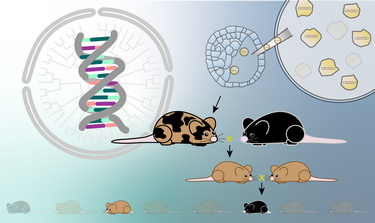Genetics: Analysis and Applications
How do we know what we know about heredity? Enhance your scientific thinking and experimental design skills with this in-depth adventure through genetics.
How do we know what we know about heredity? Enhance your scientific thinking and experimental design skills with this in-depth adventure through genetics.
How do we know what we know about heredity? Enhance your scientific thinking and experimental design skills with this in-depth adventure through genetics.
This is the second genetics course in a three-part series. Building upon the concepts from biochemistry, genetics, and molecular biology from our 7.00x Introductory Biology MOOC, these genetics courses go to a new level of depth. What are the types of genetic changes? How do nature and scientists create these genetic variations? How do we design and perform analyses to identify the genetic basis to a trait or disease?
Undergraduate introductory genetics and and molecular biology (as found in 7.00x Introductory Biology and 7.03.1x Genetics)






